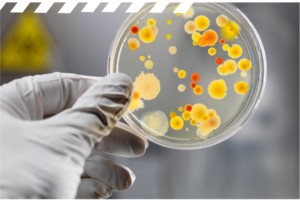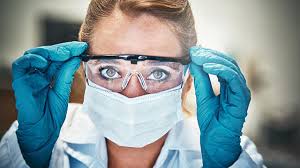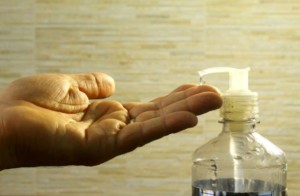Cleaning Well for Health
2020 certainly has started off dramatically! Unprecedented bushfires in Australia and now this new Coronavirus pandemic – Covid 19. Industry and government are copping the financial fallout of these disasters, but the human and environmental toll is incalculable.
On a personal note, it was devastating watching images of burnt koalas, 70metre flames and smoke-filled cities, and worrying about friends and family members in the firing line. It brought home to me why I am so passionate about sustainable cleaning practices – it’s because I understand how reliant we are on having a healthy environment and global economy. What happens in our atmosphere, air, forests, oceans, wildlife and in other countries, affects the health of us all.
So this year I have decided to write a five part Masterclass series called Cleaning Well. Each article will focus on a key risk to our health and wellbeing, then explore how to clean well to protect both building users and cleaners. The first two articles focus on biological hazards, followed by indoor air quality, chemical hazards, and workplace injuries. I hope you find them valuable.
 What are bio-hazards?
What are bio-hazards?
Biological hazards are organic substances that pose a risk to our health. Common bio-hazards found inside buildings include bacteria, viruses, mould and fungi. This first article will focus on bacteria and viruses (microbes) while the next article will take a look at mould and fungi.
On every surface you will find a layer of organic matter: skin cells in dust, soil, food and body fluids. This matter creates an environment for microbes (called a reservoir) to live in. In reality, only a small percentage of the billions of microbes living on public surfaces are capable of making us sick. Disease-causing microbes are called pathogens, or more commonly – “germs”. But while few in number, they can be very expensive.
In 2017, absenteeism cost the Australian economy an estimated $33 billion, with the flu responsible for an estimated $90.4 million of that. Cleaning surfaces effectively to remove germs and their reservoirs is an important part of flu prevention because cold and flu viruses can live up to 24 hours on a surface. In fact, the Journal of Hospital Infection recently reported that the human coronaviruses can remain infectious on inanimate surfaces at room temperature for up to 9 days.1
Ever since Florence Nightingale observed the link between infections and contamination, a core aim of cleaning has been to keep us healthy. For decades the cleaning industry has relied on disinfectants, and more recently, colour-coded tools and hand sanitisers, in the fight against germs.
But disinfectants and sanitisers are simply window dressing if we neglect to focus on the cleaning technique and the cleaning technicians themselves – because they are the key to cleaning well.
 4 ways to protect your cleaners
4 ways to protect your cleaners
An interesting aspect of cleaning is that it can both remove biological hazards, and create them. Cleaners have a far greater level of exposure to biological hazards than the average person in the building. They are literally on the frontline, cleaning contaminated surfaces, breathing in atomised toilet mists and handling contaminated paper towel waste and rubbish. And they do this for several hours, night after night.
The four most important ways to protect your cleaner’s health are:
- Hand hygiene: Cleaning staff can easily be infected by touching their eyes, nose or mouth with contaminated hands. Train them to wash their hands (including gloved hands) after handling chemicals, cleaning washrooms, removing gloves, using the bathroom or smoking, and before eating. Hand sanitisers with 60-70% alcohol can kill coronaviruses on clean hands, but mustn’t take the place of hand washing to remove the underlying contamination.
- Respiratory masks: Provide valved respiratory masks to prevent cleaners from inhaling aerosols and droplets released when they clean and flush toilets.
- Eye protection: Germs can enter eyes in three ways: 1) spray-back from a contaminated surface when sprayed directly with cleaning agents; 2) splashing and aerosols while cleaning toilets; and 3) by rubbing eyes (and nose) with contaminated hands. Safety glasses are therefore essential when cleaning surfaces known to be contaminated with coronavirus.
- Isolation: Cleaners must stay home when they are sick.
 5 ways to protect building occupants
5 ways to protect building occupants
HPC Solutions™ programs use a framework of risks and prevention strategies to help our customers plan safer, more sustainable and hygienic cleaning practices, which we then convert into customised, pictorial cleaning operation manuals.
Here is a brief overview of five hygienic cleaning strategies from this program to get you started:
1. Prioritise the High Touch Points
Identify the surfaces that are frequently touched by multiple hands, and at risk of contaminating hands or food. These are called High Touch Points (HTPs). In a commercial setting, I recommend you select 4 or 5 of the most critical HTPs per room type, then teach cleaners to prioritise them by cleaning first with clean cloths.
2. Use effective cleaning methods
Make sure your cleaning agents are freshly diluted and able to remove soil effectively from the surface. Unfortunately there isn’t an Australian Standard for validating cleaning effectiveness. But you can test the capacity of your cleaning products and tools quite simply, by cleaning butter or coffee from a glass surface, or more scientifically, with UV fluoro markers or ATP2 testing devices.
No matter how effective cleaning cloths are when they’re new, they can’t clean when they’re dirty. Teach your cleaners how to fold them into four and clean with a clean side, and supply and carry multiple cloths to allow their frequent replacement.
If this is too logistically challenging for commercial facilities, teach your cleaners to wash cloths thoroughly in warm water and detergent after each room at a minimum, and have contingencies in place to increase cloth quotas in flu season.
If a disinfectant is required, use a TGO 104 approved Hospital Grade disinfectant3 that has been made up fresh every day. Only apply disinfectants to a surface after it has been cleaned and leave it wet for 5-10 minutes (depending on the type).
3. Prevent cross-contamination
Colour-coding is designed to prevent the same cloth that cleaned a washroom from being used in a kitchen. But to prevent the toilet seat to the basin, you can either carry multiple cloths to allow them to be replaced, or two separate coloured cloths for washrooms. The way cloths are carried is also critical. Use carts of systems that separate each colour and prevent soiled cloths (and toilet brushes!) from contaminating clean cloths.
Hand hygiene is another critical means of preventing the spread of germs. And what about the most contaminated items of all, your cleaning bottles? Constantly touched by soiled hands and cloths (and even toilet brushes!) but rarely, if ever, are they cleaned. Make this a daily task.
4. Maintain cleaning supplies
A system to launder cleaning cloths and mops between shifts is a critical part of your hygienic cleaning program. Damp, dirty cloths left draped over janitor carts, or mops left in the bottom of mop buckets, create super germ reservoirs and are incredibly unhealthy.
If washing machines and dryers are not feasible, then supply a washing bucket and drying rack as a minimum, or take cloths off site to launder. Disposable wipes offer a more hygienic solution but create waste and may not be capable of removing heavy soil loads.
5. Measure cleaning performance
It is essential that you measure the performance of your cleaning program. There are several ways to do this, for example:
- Audit cleaners rooms and cleaners in action, to ensure your validated and risk-prevention cleaning practices (steps 1 – 4) are being carried out correctly.
- Use UV Fluoro marking on HTPs to check they have been cleaned
- Use ATP devices on HTPs to measure the cleanliness level.
- Ask your client to track rates of occupant absenteeism over a year, before and after implementing your cleaning hygiene program, and do the same for your own staff.
Remember that surface hygiene in a commercial facility is not about trying to keep surfaces sterile. Cleaners can’t be there to wipe every surface, every time they’ve been touched. Therefore the core aim of cleaning well is to remove harmful microbes from the surface along with conditions they need to grow, while preventing the risk of infection.
Update: We have now produced the Guide to Cleaning for COVID-19 with 5 customisable templates, designed to help you clean and disinfect to prevent the spread of the coronavirus.
Sources:
- Persistence of coronaviruses on inanimate surfaces and their inactivation with biocidal agents, G. Kamp et al; Journal of Hospital Infection, March 2020
- ATP: Adenosine Triphosphate is a protein molecule found in all living matter. ATP testing devices read the level of ATP on a surface.
- TGO 104: Therapeutic Goods Order 104 for testing disinfectants and sterilants.

